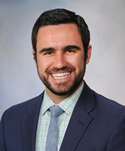
American medical schools are revered and prestigious institutions. Every year, eager and competitive pre-med students vie for the coveted chance to become physicians in the United States. In 2018, 52,777 students applied to enter medical school. Of those, only 41 percent (or 21,622 students) actually matriculated into medical school.1
This highly sought after opportunity unfortunately comes with a catch that I, as a medical student, know all too well. If you attend medical school in the US, you will pay on average $37,556 a year for public education or $60,665 a year for private education. For all four years, this adds up to be $150,224 for public medical schools and $242,660 for private.2 These costs come after racking up thousands of dollars in student debt while in college.
The medical school application process itself can cost upwards of five to ten thousand dollars after paying for entrance exams, applications, and travel.3 While it is a privilege to attend medical school in the United States, the serious consequences of medical schools charging $50,000 to $60,000 in tuition doesn’t just affect medical students, but affects average Americans as well.
How Do High Medical School Tuitions Hurt Everyday Americans?
The average graduating medical student has an educational debt of $251,600.4 While this high debt load causes many different problems for the healthcare system, let’s focus on one issue in particular.
Upon graduation, newly minted physicians are looking for a way to pay this debt off as quickly as possible and, because of this, often gravitate disproportionately towards specialties that pay top dollars. It is no surprise then that medical students are increasingly avoiding primary care fields such as family medicine, general pediatrics, and obstetrics and gynecology (OB/GYN). From 1995 to 2004, specialist physician incomes grew by 37.5 percent while primary care physician incomes only increased by 21.4 percent.5, 6 This widening income gap between specialists and generalists has led to a nation in which only 33 percent of physicians are in either primary care or general internal medicine fields in 2015. In comparison, fifty percent of American doctors were primary care or internal medicine physicians in1951.7
In Canada, where the average medical education costs around $13,000 USD, 47 percent of their doctors were in primary care in 2013 (not including internal medicine). In the United Kingdom, where medical school costs around $10,000 USD, 29 percent were primary care doctors. In America, due in part to our high medical school costs, only 12 percent of physicians were primary care physicians.8,9
The lack of primary care and internal medicine doctors in America undoubtedly hurts our citizens. Access to primary care is key to a healthy population and helps coordinate and maintain the health of everyday Americans.10 Also, when patients do not have consistent access to primary care physicians, they are pushed to more expensive care settings, like an urgent care clinic or the emergency room. It is time to understand the downstream cost, both financially and physically, that high medical school tuition puts on the average American.
How Can We Improve the Situation and Help Americans Everywhere?
In many developed countries, governments heavily subsidize their medical education. Unfortunately, government funding for medical schools in the US is currently on the decline.11 We need both state and federal governments to take up this cause and provide more funding for medical education.
Also, the laws of supply and demand are at play. America, which faces a doctor shortage, needs both additional medical schools and an increase in residency positions to train medical doctors after graduation. If schools can provide more seats to potential medical students, schools may start to compete more for high performing students through lowered prices.
Another option for lowering medical school costs is through philanthropy. Thanks to gracious donors, NYU Grossman School of Medicine and various other medical schools have implemented plans to either make medical school free or incredibly cheap for its students.12
Whether the answer is increased federal funding, soliciting donations, or innovating with new private/public partnerships, medical schools must find a way to decrease prices. This change is not just in the interest of medical students like me, but in the interest of every American searching for financial and physical wellbeing.
Author Bio

Caleb McKinney
Caleb McKinney is a 1st year medical student at Loma Linda University School of Medicine. He graduated from Southern Adventist University in December with a degree in finance and a minor in chemistry. Caleb is passionate not only about the science of medicine, but also about the financial, political, and social aspects of medicine that make this field so unique. He enjoys spending time with his lovely wife of one year and five months, working out, playing/watching sports, and finding great vegan food in Southern California.
References:
- https://www.usnews.com/education/best-graduate-schools/the-short-list-grad-school/articles/10-medical-schools-with-the-most-applicants
- https://www.aamc.org/data-reports/reporting-tools/report/tuition-and-student-fees-reports
- https://www.cnbc.com/2019/10/04/it-can-cost-10000-to-apply-for-medical-school.html
- https://www.credible.com/blog/statistics/average-medical-school-debt/
- https://www.commonwealthfund.org/sites/default/files/documents/___media_files_publications_issue_brief_2011_jan_1466_abrams_how_aca_will_strengthen_primary_care_reform_brief_v3.pdf
- https://jamanetwork.com/journals/jama/fullarticle/368179
- https://www.amjmed.com/article/S0002-9343(17)30134-1/pdf
- https://www.shemmassianconsulting.com/blog/medical-schools-in-canada
- https://www.studyin-uk.com/services/medicine/fees-and-funding/
- https://www.ncbi.nlm.nih.gov/pmc/articles/PMC3820521/
- https://www.ncbi.nlm.nih.gov/books/NBK217691/
- https://www.cnbc.com/2018/09/08/why-nyus-tuition-free-medical-school-may-not-live-up-to-its-hype.html
